Imagine you're drugged by someone you thought you trusted. You wake up in the morning with your face down in the dirt. You're aching. Your appearance has changed and you can feel that you're different as you try to stand through the pain. Beyond the physicality of it, your power was stolen from you. Your flight response. Your dignity.
You're confused. Enraged. Devastated. Angry. You set everyone on fire around you. You wish hatred on newborn babies. You want to hide in an evil shell of darknesss where everything is black and no one can touch you. Or ever hurt you. They talk about walls on reality TV shows. Oh, you build walls -- they're walls of thorns with armed towering guards that will crush any man who tries to approach it.
And though it sounds like a rape victim's story -- it's not. It's the storyline of Maleficent.
Rape has so permeated our culture that it ended up in a Disney movie.
It's a Wicked-like backstory, and in it, we learn why Maleficent casts a spell on an evil baby. She's a fairy before the black magic begins. She soars through the forest with freedom and passion. She falls in love with Stefan, a human. He returns to kill her so that he can be king.
But he doesn't kill her. He rapes her of her ability to fly. He drugs her and leaves her so that he can bring her wings back to the king of the humans like Dorothy was told to fetch the broom of the Wicked Witch. She wakes up moaning, wailing. Stumbling. Utter devastation.
My 5-year-old digested the scene as an act of betrayal. She flat-lined the reasoning for Maleficent's rage: "He cut off her wings." Maleficent was wounded. But she survived. More, she recovered -- physically and psychologically.
Grown women know better. I know better. I'm too familiar with the headlines about the boys who feel entitled to take from women and girls. Boys like these. And these. And now, these three boys, who raped a drunk girl at a prom party. There is so much rape that when you write a story about a woman at her most vulnerable point (is drugged in the dirt enough for you?), rape becomes the symbol. Even if that's not the writer's intention. Writer Linda Woolverton doesn't actually say that this was a rape scene -- instead she says in an interview that she had always wanted to do a "dark fairy story."
I had done some research, and the biggest surprise is that she's a fairy, not a witch. I've always wanted to do a dark fairy story. Then I watched that scene where she curses the baby, and I'm thinking "well if she's a fairy, where are her wings?" Suddenly it was "boom. Lightbulb. Oh! It's the wings!" Then I worked backward from there to create the Stefan relationship.
Right. The wings. The wings give her the freedom to escape. To fly away. It's about her ability to retreat. And if you can't fly. If you can't run. If you're drugged and trapped. Even if you agree to hang out in the forest with your attacker in the first place.
This is the horrific side of rape culture. We're so enmeshed in it that it's impossible to ignore that a metaphorical rape occurs in a Disney movie. It's a traumatic backstory -- one that 70 percent of women who are raped understand. They're sexually attacked by someone they know.
For the reviewers who aren't happy that Disney brought a rape/recovery element to their beloved Sleeping Beauty backstory, writer Sady Doyle makes the case that Sleeping Beauty has always been about rape.
In the earliest known version of the tale -- the Italian "Sun, Moon and Talia," by Giambattista Basile -- the princess is not awakened by "true love's kiss," or by a kiss at all. She's discovered by a king who repeatedly rapes her while she's unconscious. She gives birth to two children in her sleep, before one of those children dislodges the splinter in her finger and wakes her up. Later versions of the tale (including the version recorded by the Grimm Brothers, or by Charles Perrault, who's credited as a writer on Maleficent) censor this ending, to make it more chaste and less violent. But that central image -- a man "kissing" an unconscious woman -- made it into the Disney version, and has survived into the present day.
There are also a number of critics who have said that this movie was targeted to the Frozen fans. That it was targeted to girls and moms. But Maleficent is a commentary on current male and female relationships. It's a commentary on rape culture. And much more, it's a story that allows a woman to recover. It gives her agency. It gives her power. It allows her to reclaim the story. And this is something that can't be ignored.
This originally appeared on Femamom.